Are you wondering about your data security and looking for an ultimate guide to enable or disable device encryption on your Windows 11 computer?
If you’re looking for a step-by-step guide to enable or disable device encryption on a Windows 11 computer, you’ve come to the correct spot.
As a tech specialist, I will show you some effective and tested methods to enable or disable device encryption to protect your data on your Windows 11 system.
Keep reading the whole post and precisely follow the instructions.
So, let’s get the discussion started.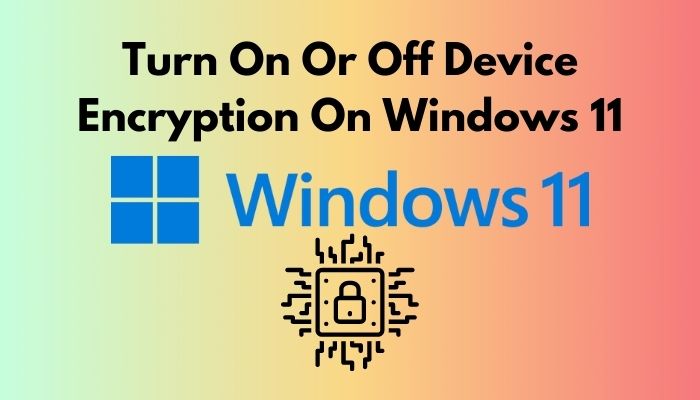
Why Do You Need Device Encryption?
The process of encrypting data using mathematical functions is known as device encryption. The device encryption helps to protect your files and folders from unauthorized access in case your device is lost or stolen.
When you enable device encryption, only persons who have been given permission can access the information on your device. Device encryption is a robust data protection system.
Generally, you must log in to your Windows 11 computer when viewing, edit or accessing your data. If anyone wants to steal your data, they need to bypass your windows protection. But, bypassing your windows protection is a tricky and lengthy process.
However, to access your data, they just need your hard drive and install another computer to access all of your data without any login credentials.
So, protecting the security threat, Device encryption, or BitLocker encryption is helpful for Windows users to protect data.
A wide range of Windows devices supports device encryption, but it doesn’t support all of the Windows 11 edition, and it supports only modern security systems on Windows computers. If your Windows device doesn’t have device encryption, you can use BitLocker encryption.
Also, check out our separate post on how to fix Windows can’t access network drive on Windows 11.
What Are The Device Encryption Requirements?
If you want to use device encryption on your Windows 11 computer, you need to ensure your device has essential security requirements to run device encryption. Without meeting requirements, your PC is not able to run device encryption.
The following hardware is required to use the Device Encryption feature in Windows 11:
- Windows 11 Pro, Education, or Enterprise edition.
- Unified Extensible Firmware Interface (UEFI) firmware.
- Trusted Platform Module (TPM) version 2.0 with support for Modern Standby.
- Enable TPM on UEFI/BIOS mode.
How I Check My Pc Supports Device Encryption
Suppose you want to use the device encryption protection system to protect your valuable data on your computer. In that case, first, you need to ensure your device supports device encryption by meeting all the requirements.
Follow these steps to check your device supports device encryption:
- Press Windows Key or click on the Windows search bar and type system information.
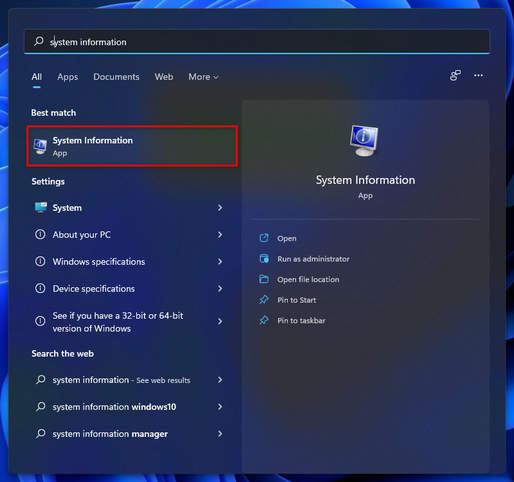
- Right-click on the search result and select Run as administrator to open the System Information on admin privilege.
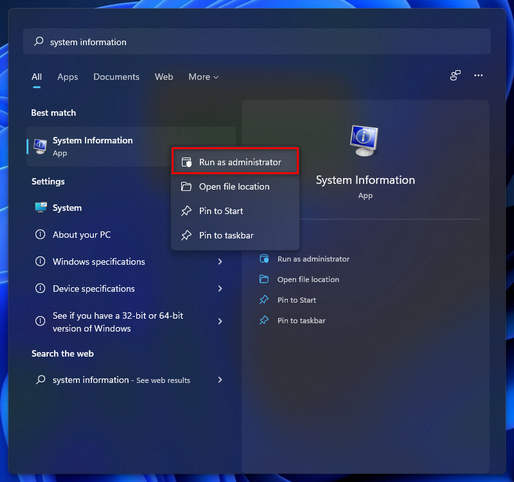
- Make sure to select System Summary on the left-side panel.
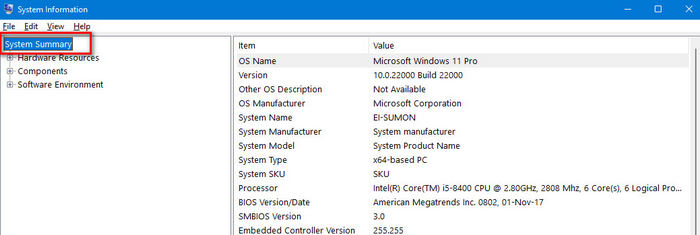
- Scroll down and find out the Device Encryption Support item.
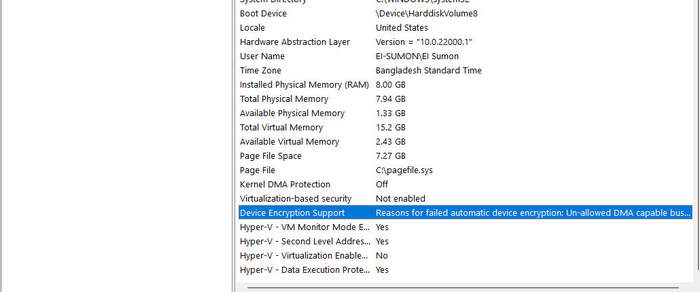
- Check the Device Encryption Support status. If the status shows Meet prerequisites, your PC supports device encryption. Image no: Need to take screenshots from the supported Device encryption PC.
- If the status shows Reason for failed device encryption, your PC doesn’t support device encryption.
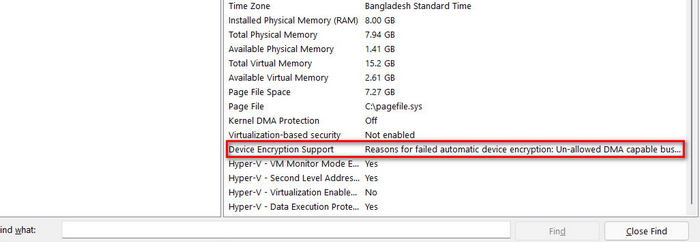
Here’s a complete guide on how to enable Telnet on Windows 11.
How to Turn On or Off Device Encryption on Windows 11
If your Windows 11 device supports Device encryption, you can see the Device encryption option on your Windows settings. To use the device encryption option, you can enable or disable the device encryption.
Here are the steps to turn on or off device encryption on windows 11:
1. Turn On-Device Encryption
If you want to protect your files and folders data, you need to enable device encryption.
Follow these steps to turn on device encryption on your Windows 11 PC:
- Press Windows Key + I together on your keyboard to open Windows Settings.
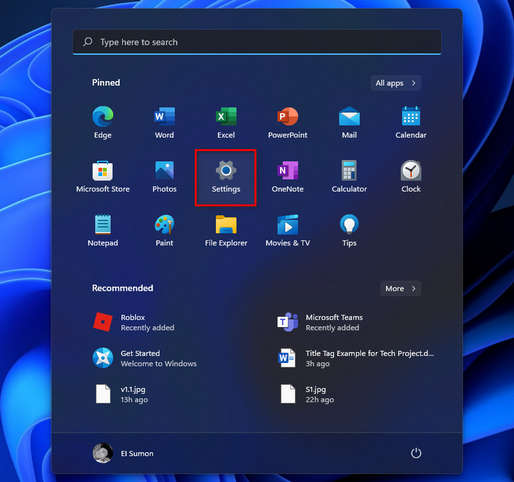
- Click on the Windows icon on your taskbar, and then click on the Settings icon under the pinned apps to open Windows Settings.
- Type settings on the windows search bar and hit the Enter button to open Windows Settings.
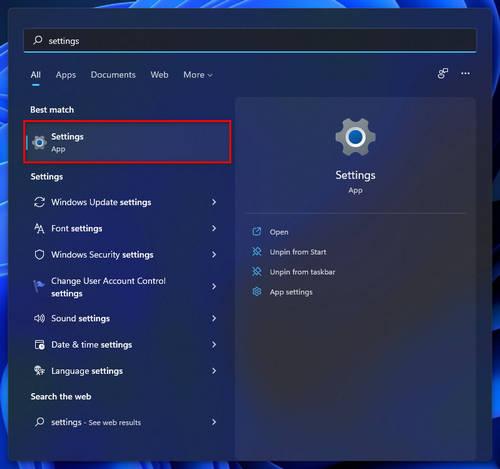
- Select the Privacy & Security option from the side left settings menu panel.
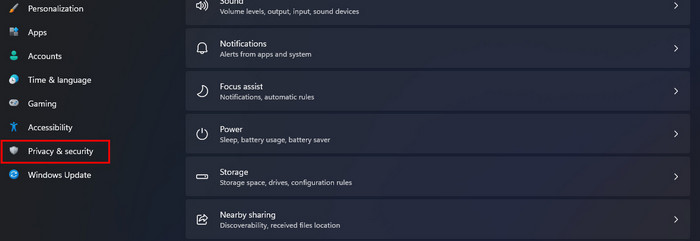
- Click on the Device encryption option on the right side of the screen under the Security section. Image no: Need to take screenshots from the supported Device encryption PC.
- Click on the right side toggle button to turn it on. Device encryption is turned on.
- The message Encryption is in progress is shown. Wait a few seconds to finish the encryption progress.
- Close the Settings window.
Here’s a complete guide on turn off Touchpad Clicks on Windows 11.
2. Turn Off Device Encryption
If you want to disable device encryption on your Windows 11 computer, you can do it to follow the same way you turn on-device encryption.
To turn off device encryption on your Windows 11 PC, follow these steps :
- Press Windows Key + I together on your keyboard to open Windows Settings.
- Click on the Windows icon on your taskbar, and then click on the Settings icon under the pinned apps to open Windows Settings.
- Type settings on the windows search bar and hit the Enter button to open Windows Settings.

- Select the Privacy & Security option from the side left settings menu panel.

- Click on the Device encryption option on the right side of the screen under the Security section. Image no: Need to take screenshots from the supported Device encryption PC.
- Click on the right side toggle button to turn off Device encryption if the button is turned on.
- Select Turn off to confirm the changes when the popup screen appears.
- The message Decryption is in progress is shown. Wait a few seconds to finish the encryption progress.
- Close the Settings window.
How to Turn On or Off BitLocker on Windows 11
If your device is not supported by Device encryption, you can not find the Device encryption option in the Windows 11 Settings. But, you can use BitLocker to protect your files and folders.
BitLocker is another Windows encryption method to protect your sensitive information. You can protect your drives from unauthorized persons by using BitLocker.
1. Turn On BitLocker
To turn on BitLocker on your Windows 11 computer, precisely follow the steps:
- Type bitlocker on the Windows search bar and press the Enter button to open BitLocker Drive Encryption.
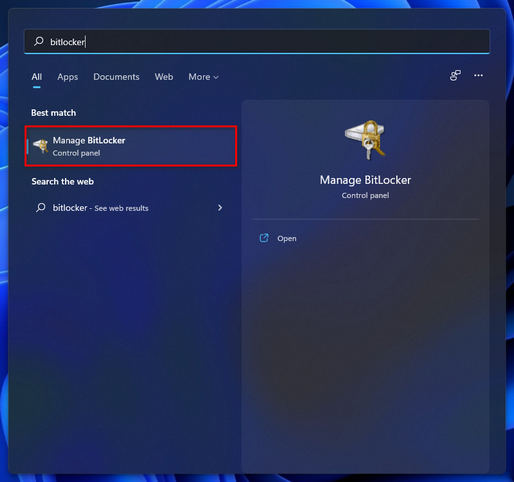
- Select the drive you want to encrypt.
- Click on Turn on BitLocker to start drive encryption.

- Choose the option you unlock this drive: Use a password, or use your smart card.
- Choose the password option.
- Enter and re-enter your password to unlock the drive, then click on the Next button.
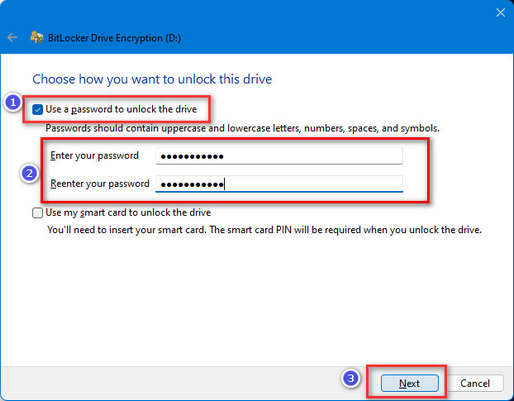
- Select a recovery option to back up your recovery key; for example, click on Save to a USB flash drive to save your recovery key.
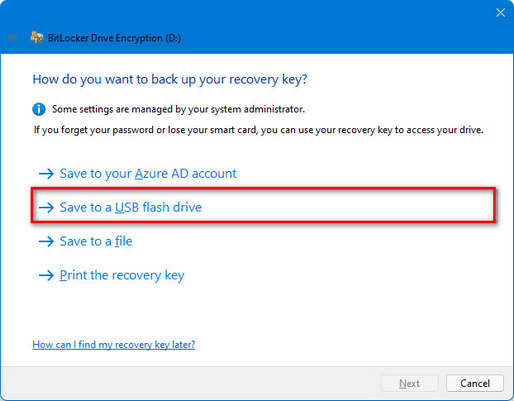
- Insert a USB flash drive and select the external drive. Then click on Save.
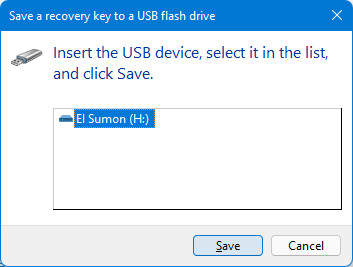
- Choose an option of how much of your drive to encrypt and click on the Next button.
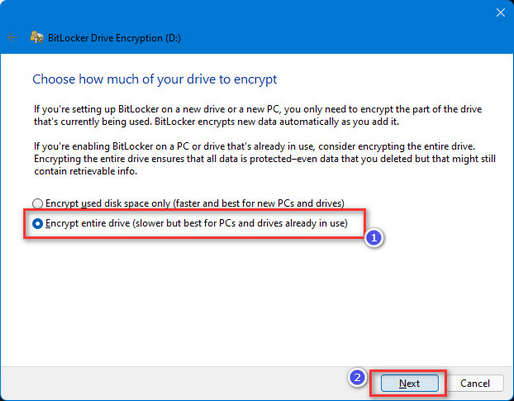
- Choose which encryption mode you use and click on the Next button.
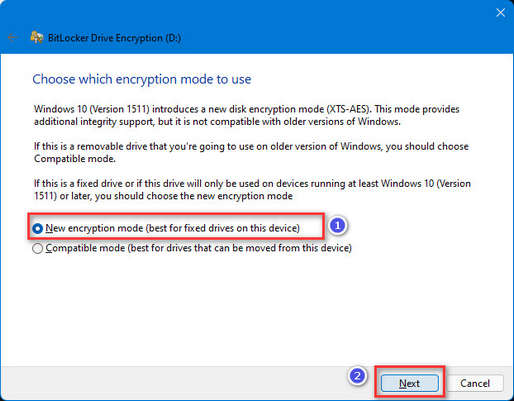
- Click on the Start encrypting button to encrypt your selected drive.
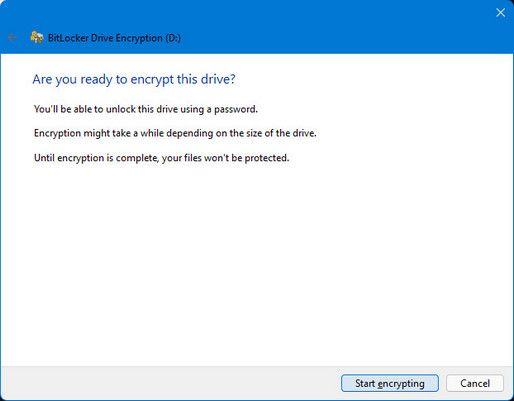
- Encrypting progress will show on a new popup screen.
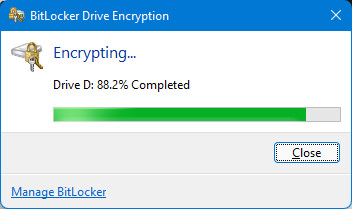
- Wait until the encrypting process is finished.
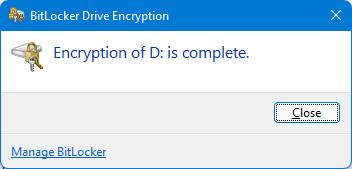
- Click on the Close button to close the window.
- After finishing the encryption, you can see a lock icon is shown on your encrypted drive.
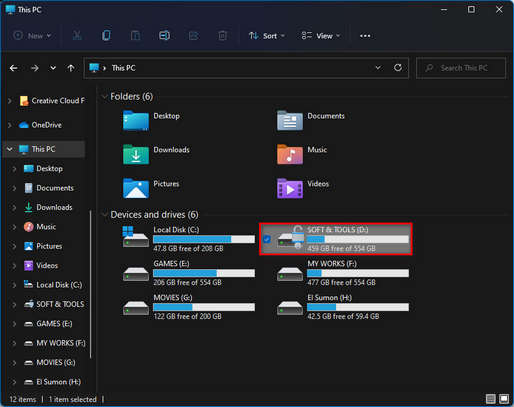
Quickly check out our latest fix for Bluetooth Toggle Missing On Windows 11.
2. Turn Off BitLocker
Follow the steps below to turn off BitLocker on your Windows 11 computer:
- Select your encrypted drive.
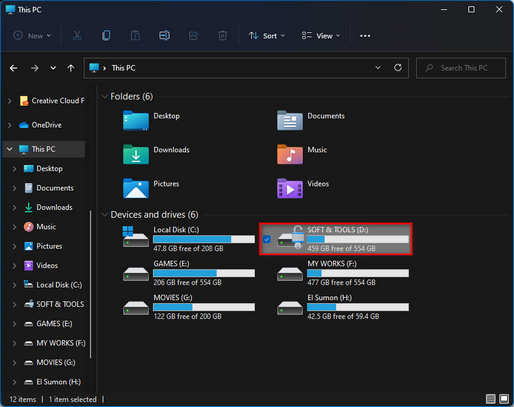
- Right-click on your drive and choose Manage BitLocker.
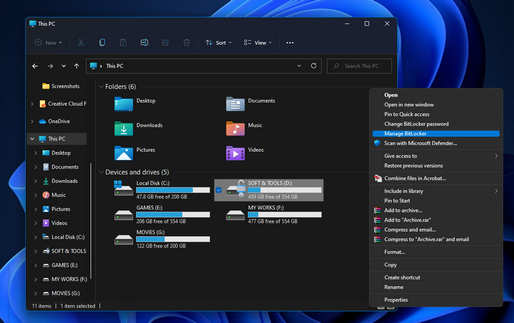
- Click on Turn off BitLocker to disable the BitLocker.
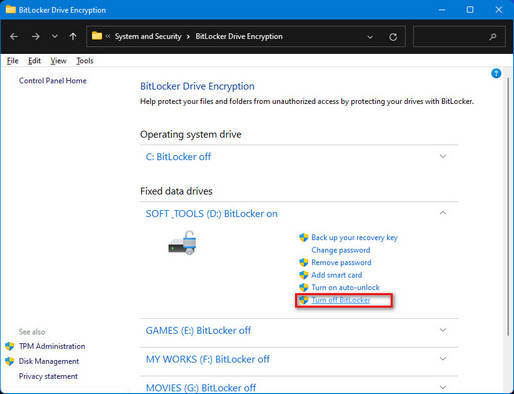
- Click on the Turn off BitLocker button to start the processing.
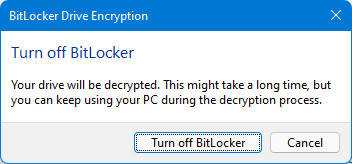
- Wait until the decrypting process is finished.

- After finishing the decryption, a new pop-up window is open, and a message shows the decryption is complete.
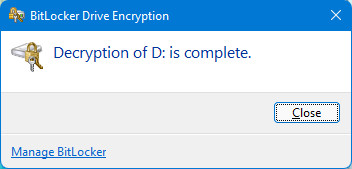
- Click on the Close button to close the window.
What Are The Reasons Your Pc Does Not Support Device Encryption
When your PC doesn’t support device encryption, your computer doesn’t meet the minimum hardware requirements to use a device encryption system. It can be possible that some system settings inaccurately are set that stop you from using the device encryption system.
Here are some possible reasons why your Windows 11 computer device encryption isn’t working:
- Trusted Platform Module (TPM) 2.0 security hardware or chip is not available on your system.
- TPM is not enabled on your device or system UEFI settings: It can be possible your device has TPM, but it is disabled on your system UEFI settings.
- Modern Standby security is not incompatible with your device: It can be possible your device has TPM, but Modern Standby is not incompatible with your device.
- Hardware security (HSTI) test interface failed: Your PC failed the Hardware Security Test Interface tests, determining if a device is correctly set up to use Windows 11 security features.
- Unallowed DMA capable bus/device detected: One of your accessories devices may allow unauthorized memory access to your PC.
- PCR7 link not supported: Your Windows computer secure boot is disabled.
Also, check our latest post on how PC won’t go to sleep mode in Windows 11.
Final Thoughts
The device encryption helps to protect your data from unauthorized access in case your device is lost or stolen. It supports only modern Standby security on Windows computers. If your Windows device doesn’t have device encryption, you can use BitLocker encryption.
Here I described the necessity of Device encryption and the requirements to use device encryption. Also, described the way you enable or disable device encryption and the method of using BitLocker.
At the end of the post, I describe some possible reasons why your Windows 11 computer device encryption isn’t working.
I hope you found this post to be helpful and informative. Please feel free to share this article with your friends or family who may be experiencing the same issue.




